 A dirty grout joint can ruin a tile installation - and, in the case of a pristine white joint, this can happen in a matter of days. It’s a particular issue with external porcelain; unlike natural stone, tiles often aren’t routinely sealed, so the grout joint is left completely exposed to organic dirt and staining.
A dirty grout joint can ruin a tile installation - and, in the case of a pristine white joint, this can happen in a matter of days. It’s a particular issue with external porcelain; unlike natural stone, tiles often aren’t routinely sealed, so the grout joint is left completely exposed to organic dirt and staining. Why does grout stain so easily?
Most tiles are grouted with cement-based formulations. These are generally water resistant but not water proof and this makes the grout joint vulnerable to staining. Moisture carrying particles of dirt can penetrate the joint, causing deep staining. Cleaning can also compound the problem. When a surface is mopped or wiped, dirty water and residue often pools or is caught in the grout line and as cement-based grout is relatively porous, dirt is absorbed into the joint. A white joint will very quickly discolour, particularly in high traffic areas or floor areas without suitable door mats to trap dirt.
How do you protect grout joints?
Application of a quality protector, immediately after installation, will prevent any dirt, grime and other organic matter – including food, drink, bathroom products, etc - from penetrating beyond the surface. It won’t make the grout self-cleaning; it will still need to be cleaned, but it will make it much easier to clean off any dirt and grime. Even if you are sealing the whole tile surface – in the case of a stone or polished porcelain installation - it is still worth applying a grout protector, as it will provide more targeted protection.
For fast and easy treatment, we recommend LTP Grout & Tile Protector. To apply, hold the cannister approx. 20 cm from the tile and spray along the joints. A 25 square metre area can be protected in just 20 minutes. Overspray onto most tile surfaces will dry and be invisible. If your tiles have a polished finish or glossy glaze any visible excess can be removed by wiping the surface with a microfibre cloth.

Protecting tiles before grouting
Some tiles will benefit from protection before and after they are grouted, including matt porcelain and handmade encaustics.
Matt porcelain tiles don’t need to be sealed but as they tend to be heavily textured – especially those used outdoors – grout can easily become lodged in the surface. This is a particular issue when brush-in jointing compounds are used; resins accumulate in the tile’s high/low surfaces and once congested, the texture is lost along with the tile’s slip resistance. A quality barrier, like LTP Porcelain Tile Protector, applied before grouting, will help protect tiles from staining and make the removal of residues easier. It will promote an easy installation, as it will improve/increase grouting working times, and a final coat after installation will make ongoing maintenance easier.
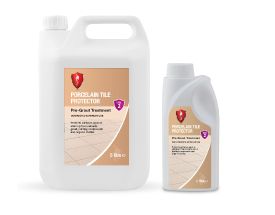
Authentic encaustic tiles are made from a mixture of natural marble powder, cement and coloured pigments which create a surface pattern above a sand and cement backing. They tend to be very porous and can easily become stained. They will need to be sealed before and after grouting. Our blog – Protecting encaustic tiles – runs through the steps.
Both matt porcelain and encaustic installations will also benefit from the added protection of LTP Grout & Tile Protector, applied after installation.
Restoring older grout joints
Grout lines can easily be restored in older installations by deep cleaning the joint and applying a protector. For acid resistant tiles, we recommend treatment with LTP Grout Stain Remover; it contains a rapid action cleaning agent which removes cement, limescale and grout residue. For acid sensitive surfaces, including limestone and marble, we recommend LTP Grimex. To target cement residues, salts and efflorescence, the range also includes LTP Cement Grout & Salt Residue Remover, which can be used on all types of unpolished natural stone, as well as porcelain and glazed ceramics.
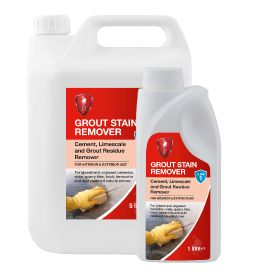
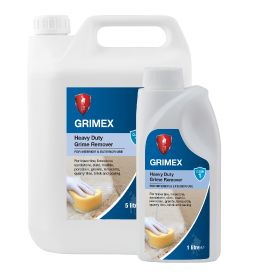
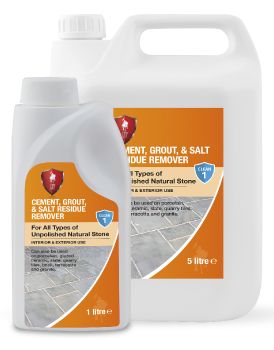
Ongoing maintenance tips
Once your grout joint has been protected, avoid strong alkali, acid or bleach-based tile/grout detergents. These types of cleaners can affect the surface of the grout, making it slightly coarser and more likely to hold onto dirt. Also, avoid homemade ‘cleaning hacks’. Many people recommend mixtures of vinegar, soda crystals, bicarbonate of soda, water and lemon to make all-purpose cleaners and these ingredients are either very acidic or have high alkaline levels. A lot of natural materials, like limestone and marble, are very sensitive to acid and alkaline, as are grout joints. All of these can damage the natural tile and the grout joint.
A good quality pH-neutral detergent will keep surfaces clean and help ensure that the grout protection is not compromised. Neutral spray cleaner - LTP Multpurpose Cleaner - is ideal for kitchens and bathrooms. Other options include LTP Porcelain Tile Cleaner and LTP Stonewash.
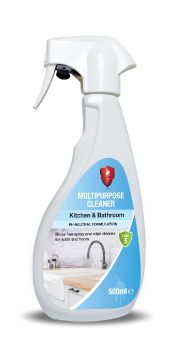


For more advice, visit our blog and LTP TV which includes video demos on all aspects of cleaning, sealing and renovation. Also, contact LTP’s Technical Team on tel. 01823 666213, and email [email protected]
ends -
For further media information and photography, please contact:
Angela Fitzhugh PR Ltd on email [email protected] or tel. +44 (0)1579 673026



